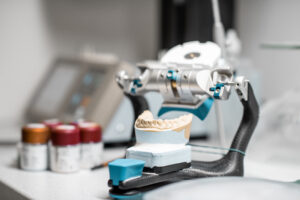If you’re facing the prospect of tooth extraction, it’s natural to have questions and concerns. That’s why in this article, we’ll provide a comprehensive guide to tooth extraction treatment. We’ll cover the reasons for extraction, the procedure itself, and more.
What are the most common reasons for Tooth Extraction?
There are several reasons why we, as dentists, may recommend tooth extraction. Understanding these reasons can help you appreciate the necessity of the procedure and make an informed decision. The common reasons for tooth extraction include:
Severe Tooth Decay
Removing the decayed tooth can prevent the spread of infection to neighbouring teeth and improve overall oral health.
Gum Disease
In cases where the supporting structures of the teeth, such as the gums and bone, are severely damaged, extraction may be the best course of action to preserve oral health.
Crowded or Misaligned Teeth
Sometimes, tooth extraction is necessary to create space in the mouth for orthodontic treatment. Removing a tooth can facilitate the proper alignment of the remaining teeth, improving both function and aesthetics.
Impacted Wisdom Teeth
Wisdom teeth often lack sufficient space to emerge properly. When these teeth become impacted, causing pain, infection, or damage to neighbouring teeth, extraction is often recommended.
What you can expect from a Tooth Extraction Treatment
Before undergoing a tooth extraction, proper preparation is crucial. Here are some of the steps involved:
- A dental examination and X-rays may be needed to assess the condition of the affected tooth. This step is often needed to identify any potential complications.
- A discussion with your dentist or oral surgeon will help you understand your procedure in detail. You can ask about anaesthesia options based on your needs and medical history.
Anaesthesia for tooth extraction
Dental extractions are typically done with a local anaesthetic to numb the gums while allowing you to feel pressure. Sedatives can be given for anxiety and relaxation. General anaesthesia is usually reserved for young children or individuals with learning disabilities. And in cases of multiple or complex extractions, your dental practitioner may refer you to a hospital for the procedure.
Tooth Extraction Procedure
The tooth extraction procedure at Beech Cottage Dental generally involves the following steps:
- The procedure begins when we inject a local anaesthetic into the area surrounding your tooth.
- After a few minutes, we’ll check if the anaesthetic has taken effect and may ask you a few questions.
- We’ll then widen the tooth socket and gently loosen the tooth before extracting it.
- In some cases, a stitch may be placed in the empty socket to facilitate healing.
- Although you may feel pressure during the procedure, it shouldn’t be painful.
- If you feel any pain, you should inform us immediately.
Aftercare instructions
After the extraction, we’ll provide detailed aftercare instructions to promote healing and prevent complications such as infection or dry socket. It’s crucial to follow these instructions, which may include:
- pain management techniques
- avoiding certain foods
- maintaining good oral hygiene
- attending follow-up appointments.
Conclusion
Tooth extraction is a common dental treatment used to address various dental issues. Understanding the reasons for extraction, preparing for the procedure, and following proper post-extraction care instructions are essential for a smooth and successful recovery.
Don’t hesitate to contact us to determine the best course of action for your specific dental needs.




